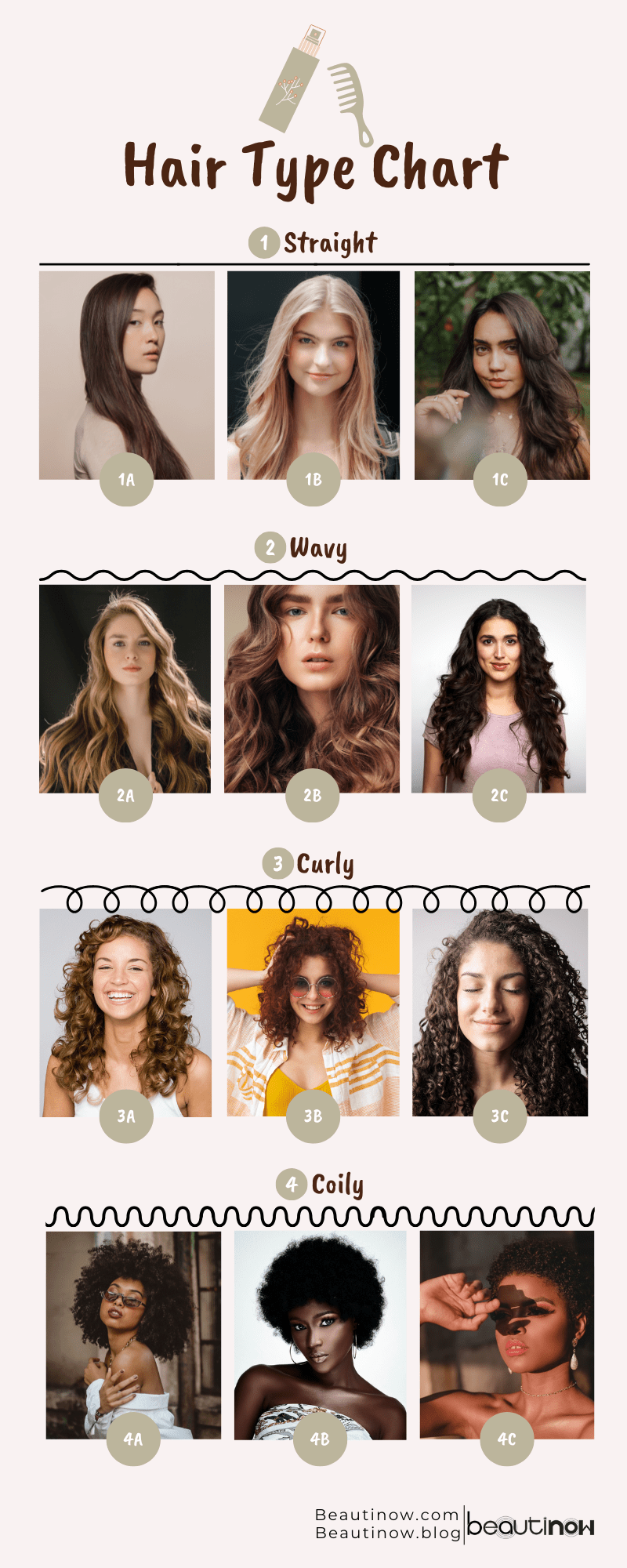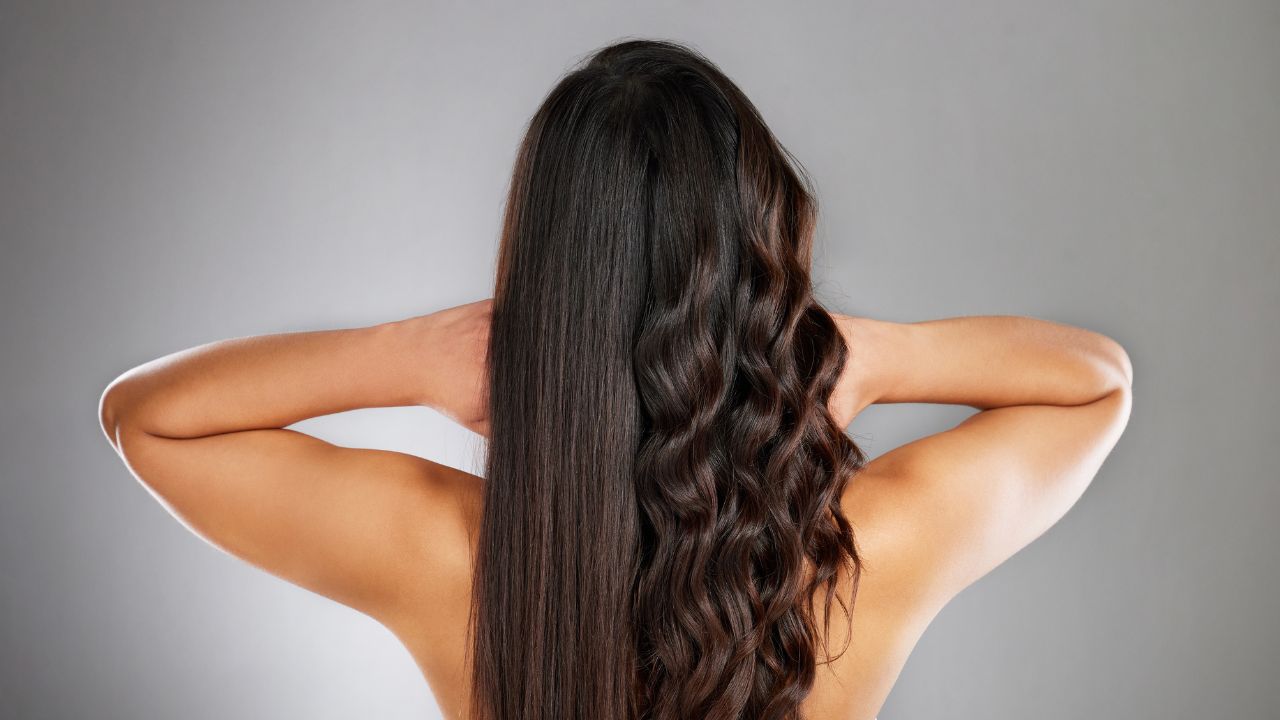How to Know Your Hair Type: Straight, Wavy, Curly, or Coily?
Ever feel like your hair possesses a secret life you know nothing about? One day, it’s behaving like a dream, and the next, it’s in full-on chaos mode. Turns out, your hair isn’t just being dramatic—it has a personality, and understanding it hinges entirely on your hair type!
Knowing where your tresses fall on the spectrum from straight to coily is the ultimate key to unlocking that effortless, good-hair-day-every-day magic. Let’s decipher the unique characteristics of your strands and finally comprehend what they’ve been trying to tell you. This comprehensive guide will equip you with the knowledge to care for your specific texture.
3 FREE Perfume Samples
We’ve recently created a Whatsapp group for beauty enthusiasts like you! To grow this community we temporarily offer 3 free perfume samples when you join!
Make sure to join asap, we’re running out of free samples soon! After joining, you can place an order and claim the random free samples.

What Exactly Is a Hair Type? Understanding Your Strands’ Core Identity
Think of your hair type as your hair’s inherent blueprint, its default setting. It’s fundamentally about the shape of your individual strands, a characteristic determined by your hair follicles. The rounder the follicle, the straighter the hair shaft emerges. Conversely, the more oval or distinctively twisted the follicle, the more it encourages a spiral formation.
Before you start blaming your hairbrush for frustrating hair days, grasp this—your hair type is genetically encoded. So, while you can temporarily modify its appearance by curling, straightening, or chemical alterations, your natural texture will always make a vibrant comeback (much like a pop song from the early 2000s). The clever strategy? Learning how to work with it instead of battling against its innate characteristics!
The Hair Type Breakdown: Decoding the Andre Walker System
If you’ve ever pondered why some waves appear gentle and flowing while others are compact spirals, it’s all thanks to the hair typing system.
Originally popularized by celebrity stylist Andre Walker, this framework categorizes hair into four primary types: Straight (Type 1), Wavy (Type 2), Curly (Type 3), and Coily (Type 4). Each distinct type further branches into subcategories (A, B, and C) based on how loose or tight the pattern presents.
Most individuals actually possess a mix of types on their head, which adequately explains why styling can sometimes feel like a protracted battle.

How to Style & Care for Your Hair Type: Customized Care for Optimal Results
The true secret to excellent hair days? Employing the correct techniques and products that genuinely play to your hair’s inherent strengths!
Type 1: Straight Hair – The Smooth Operator
Type 1 hair is distinguished by its lack of natural curl. It can be particularly shiny because the sebum from the scalp can easily travel down the unhindered hair shaft.
- 1A: This hair is remarkably straight; it consistently refuses to maintain a curl. It’s often thin, feels smooth, and becomes greasy quickly.
- 1B: Straight, but with a slight boost of substance—it will briefly hold a curl if coaxed. It’s neither too fine nor too coarse.
- 1C: This hair is more substantial, occasionally showing a subtle wave in certain areas, but remains predominantly straight and resilient.
Hair Care Tips for Type 1:
- Product Choice: Shun weighty serums or rich creams unless you specifically wish for an oily appearance. Opt for very light sprays or mousses.
- Cleanliness: Dry shampoo serves as your constant companion for second-day (or let’s be honest, third-day) tresses to absorb excess oil.
- Volume Boost: Texture sprays instantly add elevation when your hair appears overly flat.
- Cutting Strategy: A blunt cut typically makes slender hair look fuller—excessive layering can create a thinner impression.
Common Challenges for Type 1: Lacks natural volume, prone to greasiness, struggles to hold styles.
Type 2: Wavy Hair – The Effortless Bend
Type 2 hair forms an S-shaped pattern that can range from a subtle bend to a pronounced wave. It generally sits closer to the head than curly hair, and frizz can be a frequent concern.
- 2A: Exhibits gentle waves that convey a “beachy” vibe but also hint at indecision. It’s often easy to straighten.
- 2B: Features clear S-shaped waves that can become frizzy with too much ambient moisture. The pattern starts nearer the mid-lengths.
- 2C: Characterized by substantial, ample waves that are very nearly curls. It often includes some defined ringlets among the waves.
Hair Care Tips for Type 2:
- Product Choice: Heavy oils will subdue your waves—select lightweight leave-in conditioners or wave-enhancing foams instead.
- Drying Method: A diffuser attachment on your hairdryer is your prime companion for lively waves without frizz.
- Texturizing: Sea salt spray provides a carefree, attractive texture.
- Frizz Control: Anti-humidity sprays will keep your waves appearing refined instead of puffy.
Common Challenges for Type 2: Susceptible to frizz, can be easily weighed down, inconsistent wave pattern.
Type 3: Curly Hair – The Spiraled Masterpiece
Type 3 hair features distinct, noticeable curls that form a consistent pattern, ranging from loose loops to tight corkscrews. It possesses significant body and bounce, but also demands precise care to prevent dryness and maintain definition.
- 3A: Showcases loose, lively ringlets that people will instinctively desire to touch (but absolutely shouldn’t). The curls are wide.
- 3B: Exhibits more compact, impressive curls that bring the drama (in the very best way). They have a springy quality.
- 3C: Characterized by tight, corkscrew curls with significant bounce and notable shrinkage. The strands are tightly packed.
Hair Care Tips for Type 3:
- Detangling: Avoid a brush unless you are mid-wash and have applied ample conditioner—otherwise, prepare for a frizz explosion. Use a wide-tooth comb or your fingers.
- Hydration: Leave-in conditioners are absolutely essential for moisture and curl definition.
- Hairstyles: Loose hairstyles are preferable—tight ponytails or buns can lead to unwelcome breakage.
- Product Formula: Sulfate-free, silicone-free products will keep curls content and vital.
Common Challenges for Type 3: Dryness, frizz, shrinkage, loss of definition, tangling.
Type 4: Coily Hair – The Resilient Coil
Type 4 hair is the tightest and most delicate curl pattern, forming small, dense coils that can resemble zig-zags. It has the most shrinkage and is highly prone to dryness, requiring intensive moisture and gentle handling.
- 4A: Displays defined, soft coils that avidly absorb moisture. The curl pattern is a clear S-shape.
- 4B: Features tight, zig-zag curls with a fluffy texture that bends at sharp angles rather than spirals.
- 4C: Possesses the most compact, exceedingly delicate coils that demand exceptional tender loving care. It has the greatest shrinkage and least definition.
Hair Care Tips for Type 4:
- Intense Moisture: Deep conditioning treatments are an absolute must. Your hair literally drinks up moisture like a parched sponge.
- Detangling Method: Daily combing? No. Finger-detangling while wet and conditioned is your optimal approach for avoiding damage.
- Protective Styling: Protective styles should still permit hydration (because dry hair leads to breakage).
- Washing Technique: Co-washing (using conditioner instead of shampoo) helps keep coils hydrated and prevents excessive stripping.
Common Challenges for Type 4: Extreme dryness, significant shrinkage, tangling, high breakage risk, requires delicate handling.
Other Hair Characteristics You Must Know: Beyond Just Type
Your hair type is merely the start—additional factors like porosity and density also play a huge role in how your hair looks, feels, and behaves! Understanding these provides a truly complete picture of your hair’s unique needs.
Porosity: Your Hair’s Moisture Magnetism
Porosity refers to how effectively your hair’s outer cuticle (its protective layer) absorbs and retains moisture. Imagine it like a sponge—some hair soaks up water instantly, while others let it roll right off. Your porosity level directly influences how easily your hair hydrates and how long it remains moisturized.
High-Porosity Hair
This hair quickly absorbs moisture but also loses it just as rapidly. The cuticles are raised or damaged.
- Care: Needs sealing products like rich leave-in conditioners, heavy creams, and nourishing butters to lock in hydration.
- Frizz Control: Anti-humidity treatments will prevent the dreaded frizz bomb, as its open cuticles readily absorb moisture from the air.
Low-Porosity Hair
This hair naturally repels moisture and takes an extended period to dry. Its cuticles are tightly closed.
- Care: Lightweight, water-based products are absorbed more effectively. Avoid heavy oils that might sit on the surface.
- Cleansing: Clarifying shampoos help prevent product buildup, which can further impede moisture absorption.
- Enhancing Absorption: A little warmth (like steam from a shower or a warm towel wrap) can gently open the cuticles for improved moisture penetration.
Density: How Much Hair Do You Have?
Density refers to the actual number of individual hair strands growing on your head. It’s not about the thickness of each strand, but rather how closely packed your follicles are across your scalp. The denser your hair, the more visible volume and weight it naturally possesses.
Low-Density Hair
Your scalp is quite visible in certain areas.
- Styling: Volumizing sprays, thickening lotions, and lightweight foams will effectively create the illusion of fullness.
High-Density Hair
Your scalp is barely visible—you possess a lot of hair!
- Care: Heavy creams and rich hydrating products are crucial to keep this substantial hair healthy, moisturized, and manageable.
Your hair type isn’t something to “fix”—it’s something to celebrate! The ultimate key to loving your hair is deeply understanding its unique characteristics and providing it with the specific care it actually demands.
So, let’s stop battling our strands and start collaborating with them—because magnificent hair days genuinely begin with intelligent hair care!

Great infographic, btw! I didn’t realize porosity and elasticity play such a big role too! This definitely explains why some products work wonders for others but not for me. Any tips on the best way to test porosity at home without messing it up?